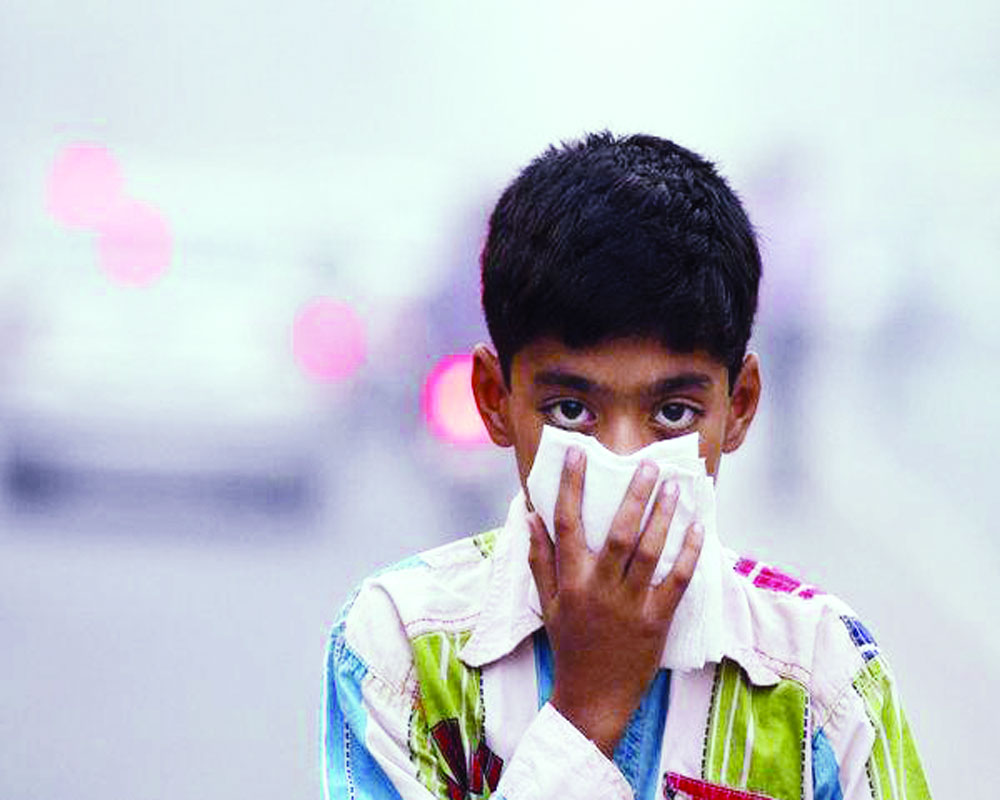Reducing indoor and outdoor air pollution must be integrated in all major Government programmes, such as Smart Cities, rather than just instituting stand-alone interventions, suggests Jean Gough
All day every day, even while they sleep, tens of millions of children in South Asia are being seriously harmed by toxic air. South Asia is leading the world and not in a good way. Here, air pollution now kills an estimated 130,000 children under five every single year. It is a staggering fact that 12 million babies in South Asia are breathing air that is six times more polluted than the international limits set by the World Health Organization. This means that South Asia has three-quarters of the global total.
The full impact of breathing harmful air is not visible to the naked eye, but the Air Quality Index measures how toxic the air is. A measurement of 0-50 is ‘good’, 50-100 is ‘moderate’, 100-150 is ‘unhealthy for sensitive groups’ (including children), 151-200 is ‘unhealthy’, 201-300 is ‘very unhealthy’, and 301-500 is ‘hazardous’. In the four-day period between January 8 and 11, the number reached 417 in New Delhi (hazardous), 310 in Kathmandu (hazardous), 328 in Dhaka (hazardous), 510 in Kabul (hazardous), and 234 in Karachi (very unhealthy). These numbers mean deaths, and they mean serious, lasting harm.
In India, nearly 1.3 million premature deaths occurred just in 2017 due to indoor and outdoor air pollution. Ten of the world’s top 20 most polluted cities are in India. Around 77 per cent of the country’s population is exposed to outdoor air pollution levels above the National Ambient Air Quality Standards safe limit. The average life expectancy in India would have been 1.7 years higher if the air pollution levels were less than the minimal level.
A cough, sore throat or sore eyes are the common things that we notice. But the real damage is far more serious. The most dangerous air pollutants of all are the smallest particles. They reach deep down into the lungs. From the lungs, they pass into the bloodstream. In the bloodstream, they circulate around the body.
Air pollution is a severe and growing threat to people of all ages, but it is particularly bad for children’s health and development. A 2018 World Health Organization study reveals that over one lakh children under the age of five died in 2016 because of air pollution in India. There are three main reasons why children are particularly at risk. First, children breathe faster than adults. A typical adult takes between 12 and 18 breaths a minute. A three-year-old child takes 20 to 30 breaths a minute, and a newborn takes 30 to 40. So young children are breathing in the polluted air two to three times as much as adults.
Second, children’s lungs and other organs are developing. This makes them particularly vulnerable to damage. This can have both immediate effects, such as asthma, and long-term effects, such as reducing their lung volume for life.
Third, the youngest children are also in danger because the barrier between the bloodstream and brain is not yet fully formed. The air pollutants can cross from the lungs to the bloodstream, and from the bloodstream to the brain. There, they actually cause brain cells to inflame. This damages the brain cells and affects the child’s cognitive and intellectual development. Today’s generation of children will be affected for life and as adults, we have a pressing and serious duty to reverse this horrendous trend.
The high exposure of India’s children and their vulnerability to air pollution make this an issue to be addressed with urgency. We need to see cleaner, renewable sources of energy and we need better waste management to prevent open burning of harmful chemicals, but of course the precise solutions vary across the region. We cannot let children breath toxic air. Speaking up for one’s children is a first step.
The Government of India’s efforts towards launching a National Clean Air Programme with an aim to cover 104 cities is commendable. However, with a target to reduce air population by only about 30 per cent by 2024, there is need for further urgent and pro-active action to protect the young generation. Stringent law enforcement regarding polluting industries, burning of solid waste/residues, among others, is non-negotiable. Policy shifts, such as the switch from pollution fuel options like diesel or petrol to CNG or electrical cars, increased investment in public transport etc are noteworthy efforts by the Government. However, further investment and incentives to adopt clean energy, especially in smaller towns, are crucial. Incentivising the use of LPG in rural areas as against highly polluting fossil fuel is another critical need.
Reducing indoor and outdoor air pollution must be integrated in all major Government programmes, such as Smart Cities, rather than instituting stand-alone interventions. This could go a long way in promoting positive behaviours, big and small, among all citizens and create a drive towards a pollution-free India for us and for the generations to come.
The writer is Regional Director of UNICEF in South Asia


























